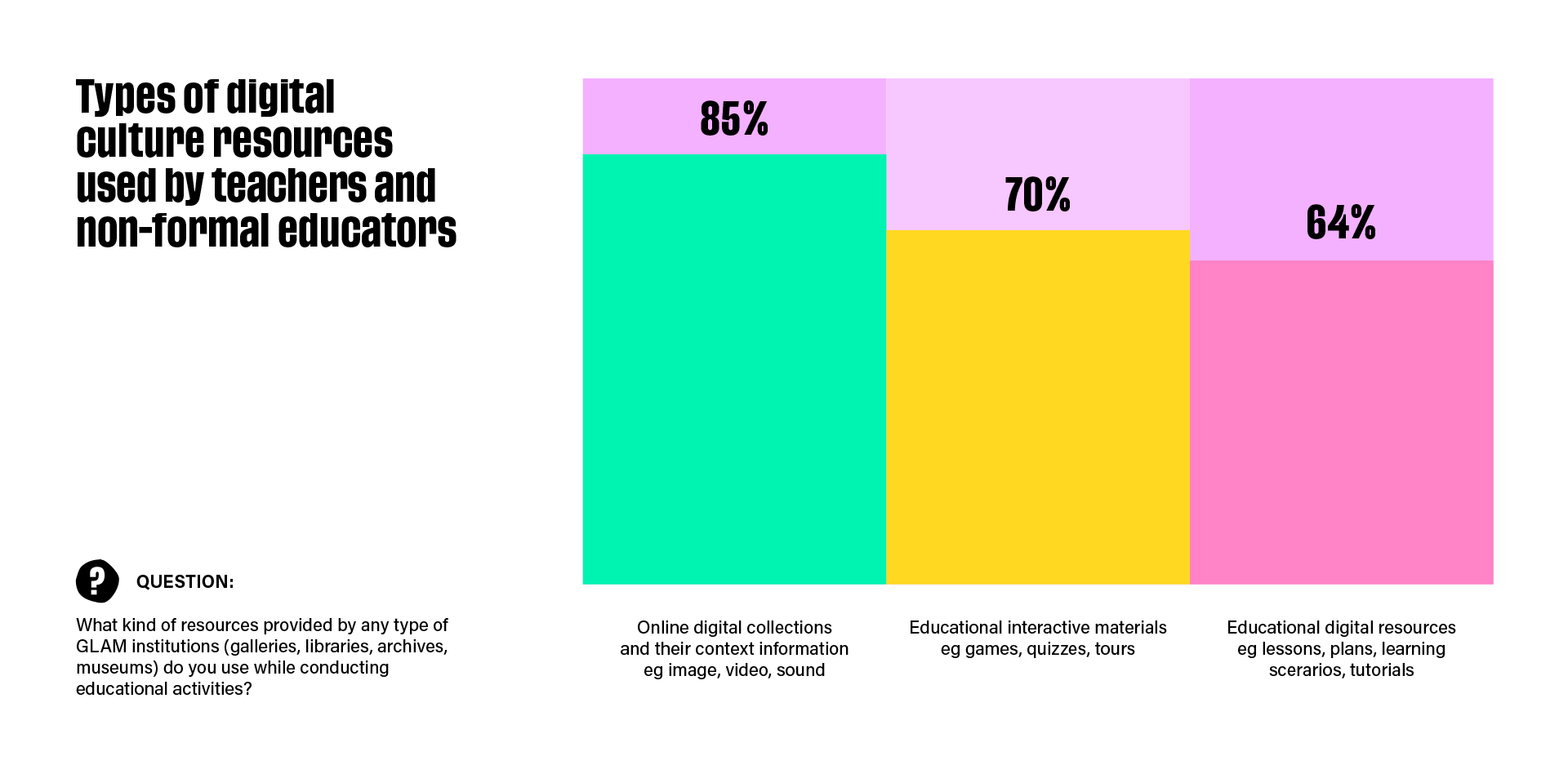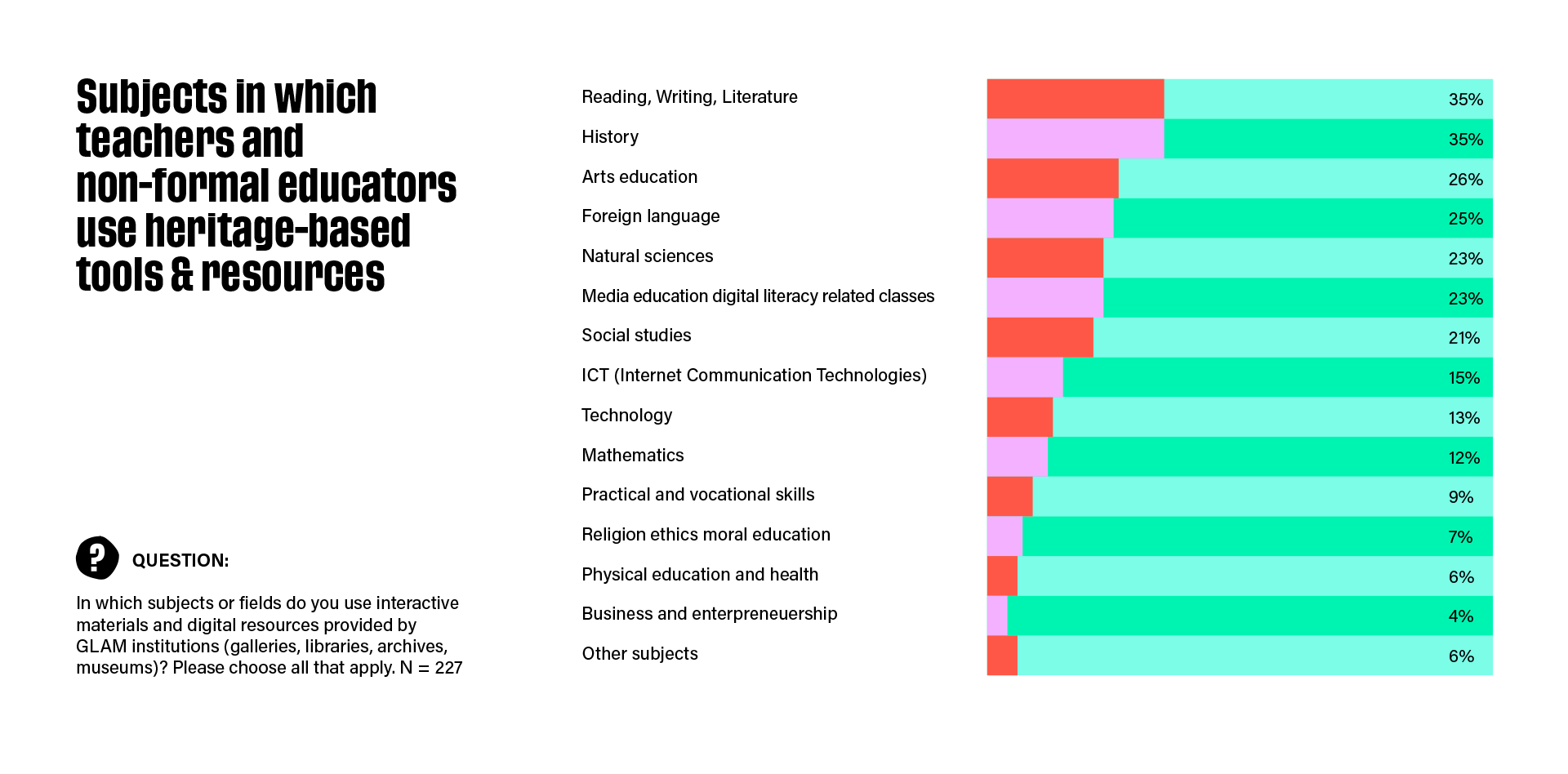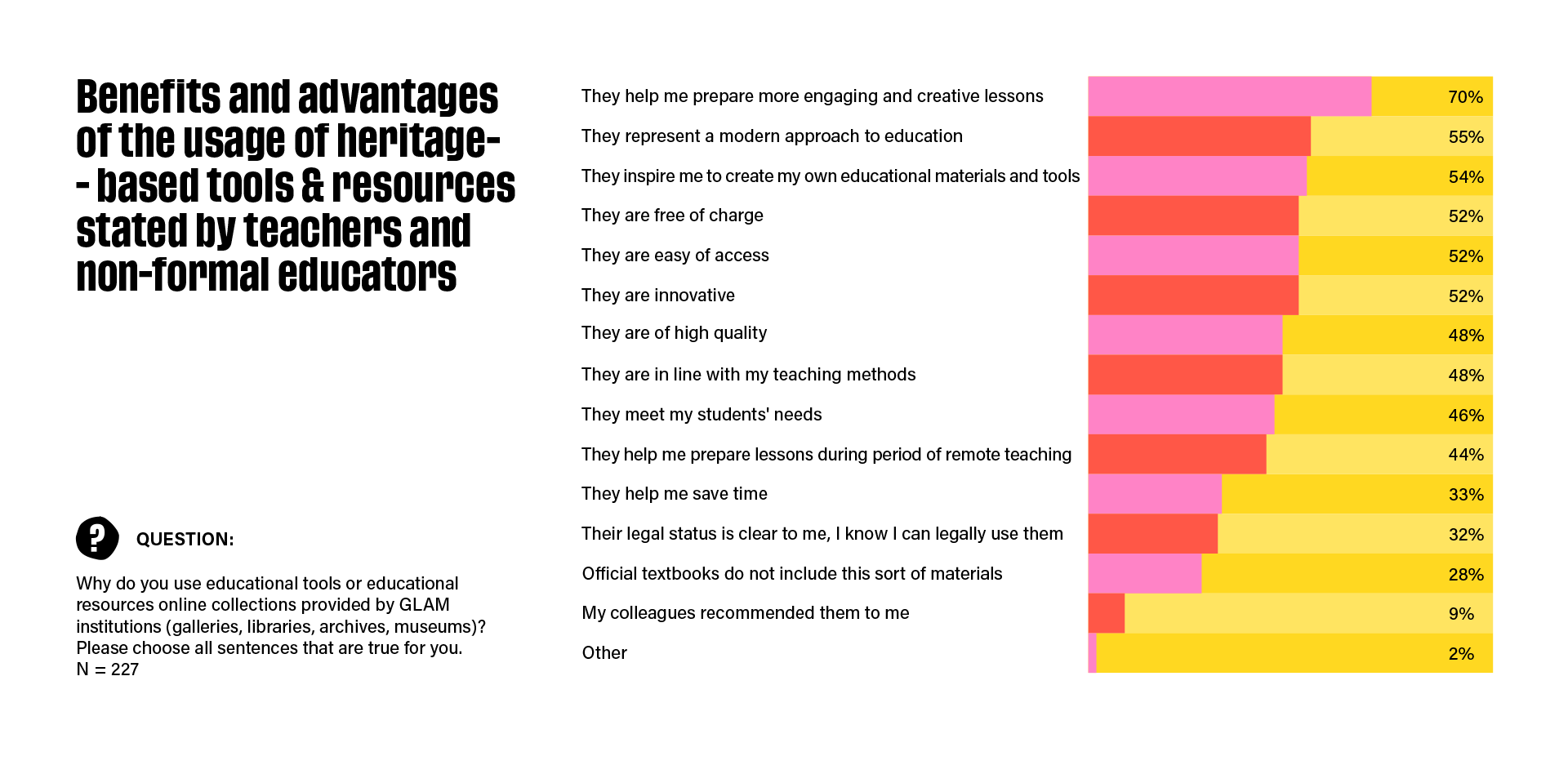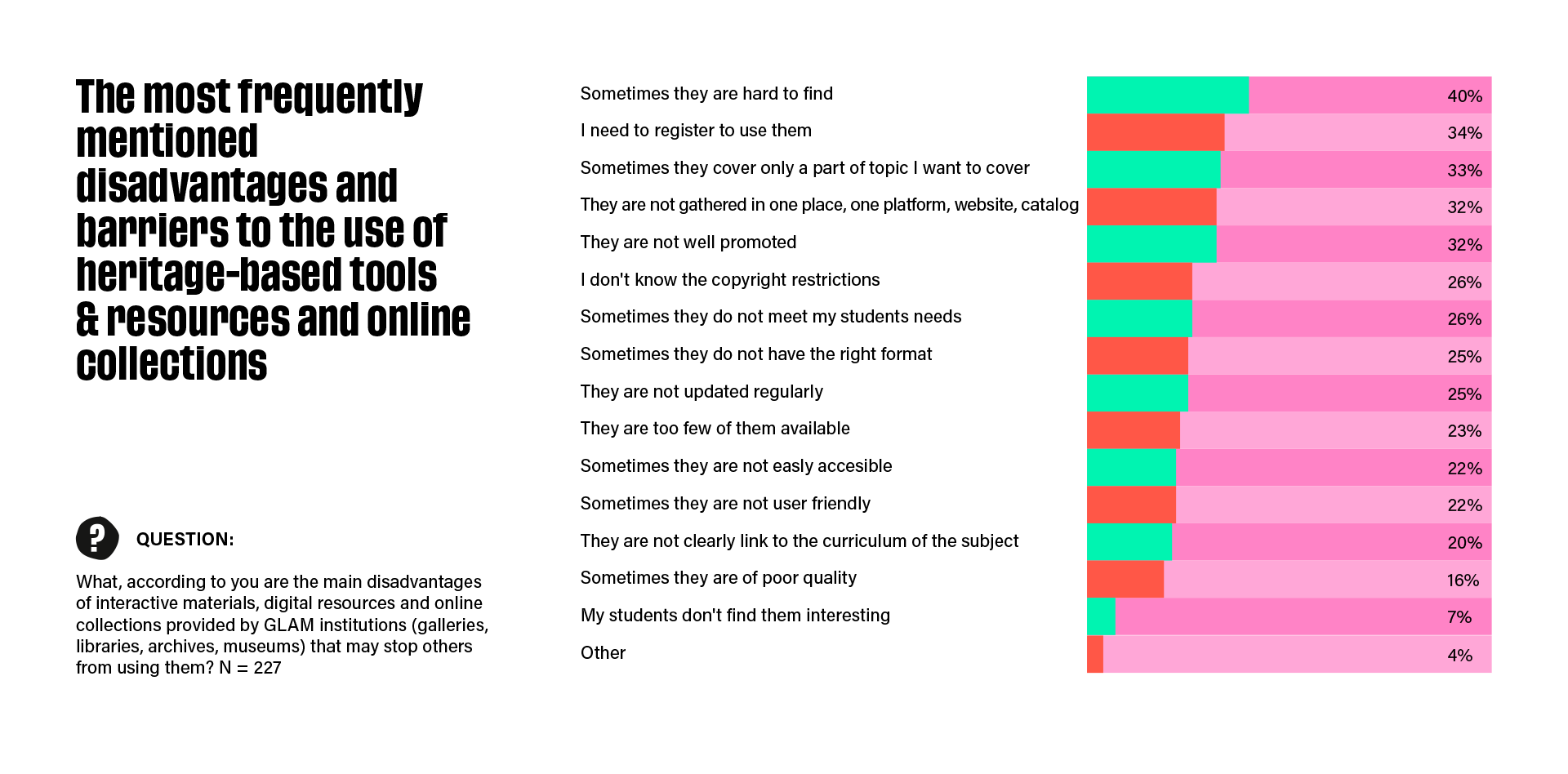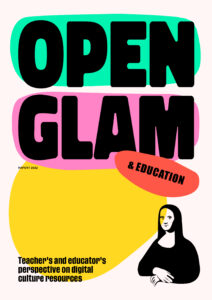
A study conducted by Centrum Cyfrowe in partnership with Europeana and EuroClio
This report presents findings of the Open GLAM & education research project which attempts to understand the importance of online heritage-based tools, resources and digitised collections for formal and non-formal education in the EU countries. The research results served as a base for creating relevant recommendations on the development of heritage-based open educational resources and online collections for educational use.
By publishing this report and recommendations we would like to encourage discussion among a wide range of stakeholders including policymakers, open education and open culture communities as well as cultural heritage institutions on policies and programmes regarding the support for the development of open educational resources by cultural institutions.
In partnership with:

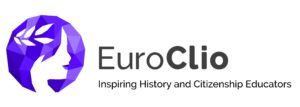
Download
We encourage all researchers and institutions to use our methodology and research tools for further research – you can download our questionnaires, all charts and diagrams in .png version and spreadsheets with collected data.
Watch the presentation
Recommendations
Recommendation on the development of heritage-based open educational resources and online collections for educational use.
Recommendation based on ‚ÄúOpen GLAM & education. Teacher’s and educator’s perspective on digital culture resources‚ÄĚ research.
By GLAM or heritage-based educational tools we understand online digital tools developed by GLAM/cultural heritage institutions that can serve different educational purposes (eg games, quizzes, mobile applications, virtual tours).
By GLAM or heritage-based educational resources, we understand online instructional materials developed by GLAM/cultural heritage institutions (eg lesson plans, learning scenarios, tutorials) that are useful for teaching.
By online collections we understand digitised collection & context information (eg image, video, sound) published online by GLAM/cultural heritage institutions.
I. Ensure and support the creation of tailored digital tools & resources and online collections for educational purposes by cultural heritage institutions
- Creation of open and accessible tools & resources for education (formal and non-formal) should be at the heart of the operational processes of cultural heritage institutions active in the digital realm. They should be tailored to the needs of relevant communities and reflect on the role of cultural heritage institutions of putting in their actions societal and public purposes first.
- EU, national, regional and community level strategies and financial programmes regarding digitisation of cultural heritage should explicitly support creation of tools & resources dedicated to educational (formal and non-formal) purposes and digital collections open for educational reuse.
- Cross-sectoral collaboration leading to creation of fit-for-purpose heritage-based open educational tools & resources should be ensured. The exchange of knowledge and best practices between different cultural heritage institutions and educational institutions, as well as technology developers should be encouraged and supported to maximise the quality and impact of the newly designed resources.
II. Make heritage-based tools & resources for education open and accessible
- Copyright law should not constitute a barrier for teachers and non-formal educators preventing them from the access, use, reuse, adaptation, public performance and dissemination of heritage-based tools & resources for any educational purpose.
- Heritage-based tools & resources for education should be free and available under open licences or as public domain with clearly labelled, easy to find and user-friendly rights statements and terms of use. The above-listed provisions should be easy to understand and to implement by teachers, non-formal educators, students and pupils.
- An awareness-raising strategy facilitating promotion and communication about the availability of existing heritage-based tools & resources for educational purposes should be orchestrated among various educational institutions at local, national and international levels.
- Actions aimed at making heritage-based tools & resources less dispersed, easier to find and search should be prioritised. It is also essential to ensure that cultural material digitised with public funding is made available through national and international aggregating platforms (such as Europeana).
- Heritage-based tools & resources for education should be accessible to people with disabilities, thus it is necessary to follow accessibility guidelines while creating them.
- Heritage-based tools & resources for education need to be made available transnationally, thus, to ensure international access to digitised cultural heritage creation of multilingual resources should be strengthened.
III. Prioritise the creation of engaging, inspiring and cutting-edge heritage-based tools & resources for education and provide training for employees of cultural heritage institutions
- Evidence-based standards and guidelines for the creation of heritage-based tools & resources for educational purposes should be developed in order to ensure high quality of newly created materials.
- The creation of engaging, inspiring, cutting-edge heritage-based tools & resources for education requires knowledge of the latest technological trends, digitisation standards, accessibility guidelines and other. Thus, it should be accompanied by relevant training and programmes for the employees of cultural heritage institutions.
- The process of creation of heritage-based tools & resources for education should put the end-users’ needs first. Actors from different sectors should be involved early in the process of creating and relevant research about end-users needs to be carried out.
- Heritage-based tools & resources for education should encourage reuse of the materials and enable teachers and non-formal educators to create their own educational materials which meet end-users’ specific needs. Heritage-based tools & resources should be engaging, inspiring and enable teachers and non-formal educators to prepare innovative and activity-based lessons.
- Cross-sectoral, creative cooperation between cultural heritage institutions, educational institutions, technology developers and other actors should be encouraged in order to enable the creation of innovative solutions regarding the creation of heritage-based tools & resources.
IV. Facilitate capacity building for teachers & educators to turn them into competent users and creators of heritage-based educational resources
- Relevant training for teachers and non-formal educators should be provided in order to enable them to fully understand and benefit from the great potential of heritage-based tools & resources for conducting educational activities.
- It is crucial to provide teachers and non-formal educators with the competencies and knowledge needed for the effective searching strategies of heritage-based tools & resources and the knowledge about national and international aggregating platforms (such as Europeana).
- Apart from the actions aimed at making the heritage-based tools & resources free and available under open licences or as public domain with clearly labelled, easy to find and user-friendly rights statements, copyright training should be provided for teachers and non-formal educators. Such training is crucial for encouraging them to use heritage-based tools & resources broadly.
Key findings
Types of digital culture resources used by teachers and non-formal educators
Online digital collections and their context information are the most frequently used resources published by cultural heritage institutions – 85% of surveyed teachers and non-formal educators use them while conducting educational activities. 70% of respondents confirm the use of educational interactive web-based materials (games, quizzes, virtual tours), while 64% admit that they use educational digital resources (lesson plans, learning scenarios, tutorials).
Subjects in which teachers and non-formal educators use heritage-based tools & resources
The collected data reveals that heritage-based tools & resources are used by teachers and non-formal educators to teach a great variety of subjects: 
- reading, writing and literature (35% of surveyed teachers & educators), 
- history (35% of surveyed teachers & educators), 
- arts education (25% of surveyed teachers & educators),
- foreign language (25% of surveyed teachers & educators), 
- natural sciences (23% of surveyed teachers & educators), 
- media education and digital literacy related classes (23% of surveyed teachers & educators), 
- ICT (15% of surveyed teachers & educators),
- technology (13% of surveyed teachers & educators),
- mathematics (12% of surveyed teachers & educators). 
Benefits and advantages of the usage of heritage-based tools & resources stated by teachers and non-formal educators
The surveyed teachers and non-formal educators point out many advantages of heritage-based tools & resources. 70% of them declare that they use heritage-based tools & resources because they help them prepare engaging and creative lessons, 55% claim that they are modern, 52% that they are innovative, and 54% admit that they inspire them to create their own resources.
The most frequently mentioned disadvantages and barriers to the use of heritage-based tools & resources and online collections
Huge dispersion and difficulty with searching and finding heritage-based tools & resources and online collections are the major barriers for teachers and non-formal educators (40% of respondents claim ‚Äúthey are hard to find‚ÄĚ, 32% state ‚Äúthey are not gathered in one place, platform, catalogue‚ÄĚ, and 32% believe ‚Äúthey are not well promoted‚ÄĚ).¬†
License
This publication is available under the Creative Commons Attribution-Share Alike 4.0 International licence.¬†You are free to: share ‚ÄĒ copy and redistribute the material in any medium or format and adapt ‚ÄĒ remix, transform, and build upon the material for any purpose, even commercially.
![]()
Recommended citation:
Biernat, M., Janus, A., CzetwertyŇĄska, A., (2022) Open GLAM & education. Teacher‚Äôs and educator‚Äôs perspective on digital culture resources, centrumcyfrowe.pl/en/open-glam-2022, ¬†CC BY-SA 4.0
Authors
Research lead: Magdalena Biernat
Authors: Magdalena Biernat, Aleksandra Janus, Aleksandra CzetwertyŇĄska
Data analysis:¬† Adam M√ľller
Concept and methodology: Magdalena Biernat, Aleksandra CzetwertyŇĄska, Aleksandra Janus, Maria Drabczyk, Anahita Rezaei
Coordination: Anahita Rezaei
Consultations: Isabel Crespo, Brigitte Vézina, Alice Modena,  
Consulted teachers & educators: Jacek Staniszewski, Rafael Montero, Patricia Barciela
Local help: Paula Sim√Ķes (Portugal)
Editing and proofreading: Nestor Kaszycki
Design: Alicja Kobza Studio
September 2022
Contact:
kontakt@centrumcyfrowe.pl

